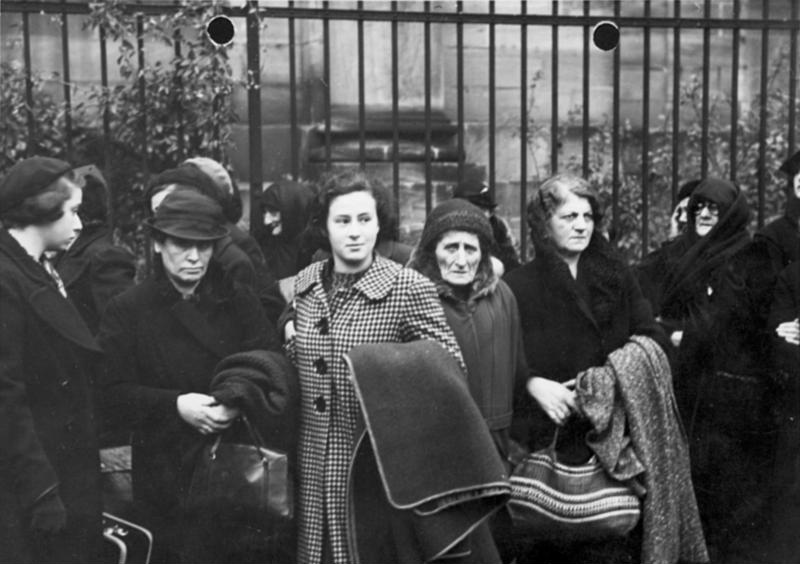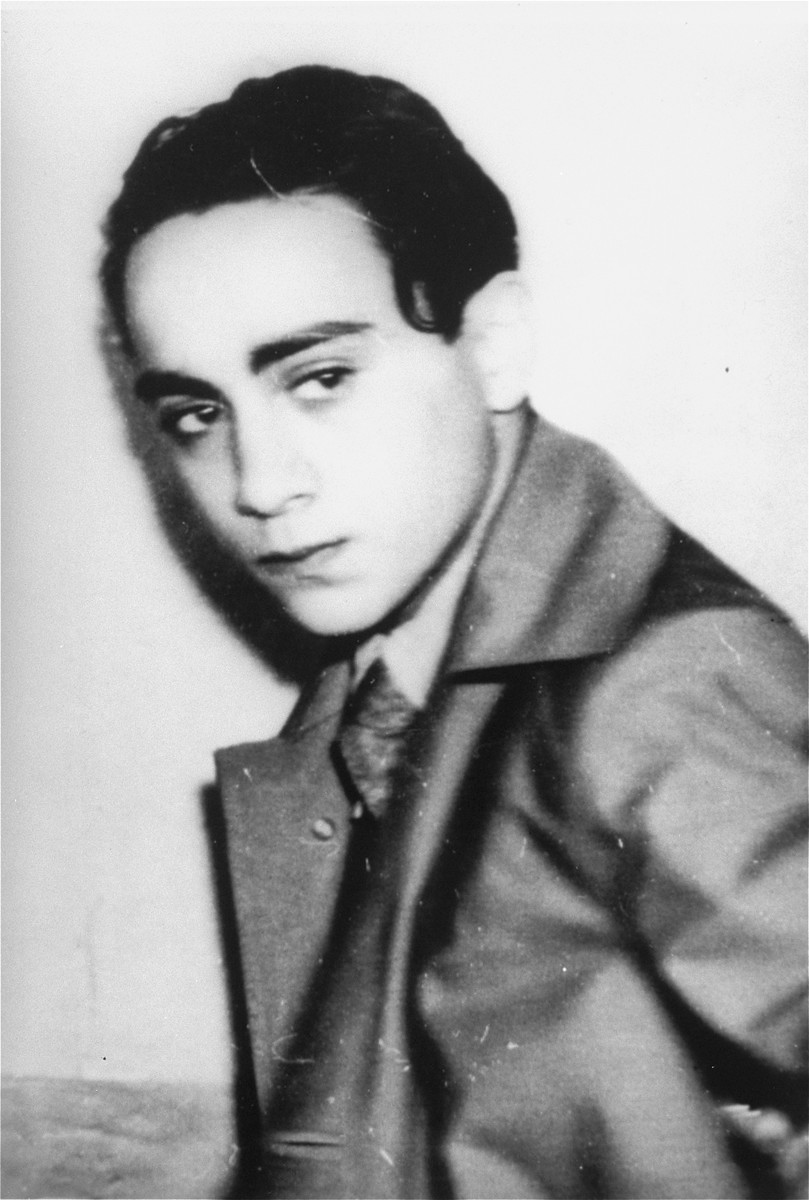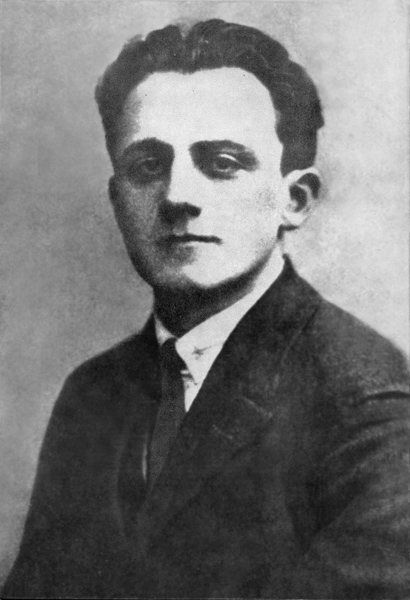|
Polenaktion
In October 1938, about 17,000 Polish Jews living in Nazi Germany were arrested and expelled. These deportations, termed by the Nazis ''Polenaktion'' ("Polish Action"), were ordered by SS officer and head of the Gestapo Reinhard Heydrich. The deported Jews were rejected by Poland and therefore had to live in makeshift encampments along the Germany–Poland border. Origins From 1935 to 1938, Jews living within Germany had been stripped of most of their rights by the Nuremberg Laws, and faced intense persecution from the state. As a result, many Jewish refugees sought rapidly to emigrate out of the Reich. However, most countries, still feeling the effects of a global depression, enacted strict immigration laws and simply would not address the refugee problem. According to a census conducted in 1933, over 57 percent of the foreign Jews living in Germany were Polish. The Polish Government, fearing an influx of Jews from the Reich, took drastic steps to isolate its Jewish citizens ... [...More Info...] [...Related Items...] OR: [Wikipedia] [Google] [Baidu] |
Kristallnacht
() or the Night of Broken Glass, also called the November pogrom(s) (german: Novemberpogrome, ), was a pogrom against Jews carried out by the Nazi Party's (SA) paramilitary and (SS) paramilitary forces along with some participation from the Hitler Youth and German civilians throughout Nazi Germany on 9–10 November 1938. The German authorities looked on without intervening.German Mobs' Vengeance on Jews", ''The Daily Telegraph'', 11 November 1938, cited in The name (literally 'Crystal Night') comes from the shards of broken glass that littered the streets after the windows of Jewish-owned stores, buildings and synagogues were smashed. The pretext for the attacks was the assassination of the German diplomat Ernst vom Rath by Herschel Grynszpan, a 17-year-old German-born Polish Jew living in Paris. Jewish homes, hospitals and schools were ransacked as attackers demolished buildings with sledgehammers. Rioters destroyed 267 synagogues throughout Germany, Austria and the ... [...More Info...] [...Related Items...] OR: [Wikipedia] [Google] [Baidu] |
Herschel Grynszpan
Herschel Feibel Grynszpan (Yiddish: הערשל פײַבל גרינשפּאן; German: ''Hermann Grünspan''; 28 March 1921 – last rumoured to be alive 1945, declared dead 1960) was a Polish-Jewish expatriate born and raised in Weimar Germany who shot the German diplomat Ernst vom Rath on 7 November 1938 in Paris. The Nazis used this assassination as a pretext to launch ''Kristallnacht'', the antisemitic pogrom of 9–10 November 1938. Grynszpan was seized by the Gestapo after the Fall of France and brought to Germany; his fate remains unknown. It is generally assumed that he did not survive World War II, and he was declared dead in 1960. A photograph of a man resembling Grynszpan was cited in 2016 as evidence to support the claim that he was still alive in Bamberg, Germany, on 3 July 1946. Early years Grynszpan was born on 28 March 1921 in Hanover, Germany. His parents, Zindel and Rivka, were Polish Jews who had emigrated in 1911 and settled in Hanover. Zindel opened a tailo ... [...More Info...] [...Related Items...] OR: [Wikipedia] [Google] [Baidu] |
Feliks Chiczewski
Feliks Chiczewski (18 May 1889–1972) was a Polish diplomat. He distinguished himself during the expulsions of Polish Jews (known as the Polish Action) from Leipzig by the Nazi regime in October 1938. His actions as consul general resulted in up to 1500 Jews being spared from deportation. Career Chiczewski was born in Sosnowiec, Poland, in 1889. He studied business in Antwerp followed by graduating from the University of Warsaw with a degree in higher administration. He spent his career working for the Polish Ministry of Foreign Affairs, where he served many roles. From 1920-1922, he was the Consulate of the Republic of Poland in Gałacz. From 1922-1928 he held the same position in Bucharest, Romania. He left Romania in 1928 and worked in the Polish parliament and as a consul in Brussels until November 1934. On November 1, 1934, he became the Head of the Consulate of the Republic of Poland in Leipzig. Polish Action (Polenaktion) of 1938 in Leipzig A 31 March 1938 decision ... [...More Info...] [...Related Items...] OR: [Wikipedia] [Google] [Baidu] |
Zbąszyń
Zbąszyń (german: Bentschen) is a town in western Poland, in Greater Poland Voivodeship, in Nowy Tomyśl County. It is the administrative seat of Gmina Zbąszyń. Geography The town is situated on the Obra river in the Greater Poland historic region, about west of Poznań. Gmina Zbąszyń is part of the Polish-German Pomerania Euroregion. History While the earliest mentions of the settlement date back to 1231, the name ''Sbansin'' first appeared in a 1277 deed, issued by Duke Przemysł I of Greater Poland at his Poznań residence. Its citizens received town privileges before 1311, making Zbąszyń one of the oldest towns in Poland. It was held by the Polish monarchs until in 1393 King Władysław II Jagiełło ceded it to his Masovian governor Jan Głowacz Nałęcz. By the early 15th century, Zbąszyń evolved as a centre of the Greater Polish Hussite movement. Zbąszyń was a private town of Polish nobility, administratively located in the Kościan County in the Poznań ... [...More Info...] [...Related Items...] OR: [Wikipedia] [Google] [Baidu] |
Racial Policy Of Nazi Germany
The racial policy of Nazi Germany was a set of policies and laws implemented in Nazi Germany under the dictatorship of Adolf Hitler, based on a specific racist doctrine asserting the superiority of the Aryan race, which claimed scientific legitimacy. This was combined with a eugenics programme that aimed for racial hygiene by compulsory sterilization and extermination of those who they saw as ''Untermenschen'' ("sub-humans"), which culminated in the Holocaust. Nazi policies labeled centuries-long residents in German territory who were not ethnic Germans such as Jews (understood in Nazi racial theory as a "Semitic" people of Levantine origins), Roma (also known as Gypsies, an "Indo-Aryan" people of Indian subcontinent origins), along with the vast majority of Slavs (mainly ethnic Poles, Serbs, Russians etc.), and most non-Europeans as inferior non-Aryan subhumans (i.e. non-Nordics, under the Nazi appropriation of the term " Aryan") in a racial hierarchy that placed the ''Herr ... [...More Info...] [...Related Items...] OR: [Wikipedia] [Google] [Baidu] |
Leipzig Wächterstraße 32 Villa Ury Tafel
Leipzig ( , ; Upper Saxon: ) is the most populous city in the German state of Saxony. Leipzig's population of 605,407 inhabitants (1.1 million in the larger urban zone) as of 2021 places the city as Germany's List of cities in Germany by population, eighth most populous, as well as the second most populous city in the area of the former East Germany after (East Berlin, East) Berlin. Together with Halle (Saale), the city forms the polycentric Leipzig-Halle Conurbation. Between the two cities (in Schkeuditz) lies Leipzig/Halle Airport. Leipzig is located about southwest of Berlin, in the southernmost part of the North German Plain (known as Leipzig Bay), at the confluence of the White Elster, White Elster River (progression: ) and two of its tributaries: the Pleiße and the Parthe. The name of the city and those of many of its boroughs are of Slavic languages, Slavic origin. Leipzig has been a trade city since at least the time of the Holy Roman Empire. The city sits at th ... [...More Info...] [...Related Items...] OR: [Wikipedia] [Google] [Baidu] |
Ernst Vom Rath
Ernst Eduard vom Rath (3 June 1909 – 9 November 1938) was a member of the German nobility, a Nazi Party member, and German Foreign Office diplomat. He is mainly remembered for his assassination in Paris in 1938 by a Polish Jews, Jewish teenager, Herschel Grynszpan, which provided a pretext for ''Kristallnacht'', "The Night of Broken Glass". Early life and career Vom Rath was born in Frankfurt am Main to an aristocratic family, the son of a high-ranking public official, Gustav vom Rath. He attended a school in Breslau, and then studied law at Bonn, Munich and Königsberg, until 1932, when he joined the Nazi Party and became a career diplomat. In April 1933 he became a member of the Sturmabteilung, SA, the party's paramilitary unit. In 1935, after a posting in Bucharest, he was posted to the Franco-German relations, German embassy in Paris. Regarding the "Jewish Question", Rath expressed regret that the German Jews had to suffer but argued that the anti-Semitic laws were "neces ... [...More Info...] [...Related Items...] OR: [Wikipedia] [Google] [Baidu] |
Paris
Paris () is the capital and most populous city of France, with an estimated population of 2,165,423 residents in 2019 in an area of more than 105 km² (41 sq mi), making it the 30th most densely populated city in the world in 2020. Since the 17th century, Paris has been one of the world's major centres of finance, diplomacy, commerce, fashion, gastronomy, and science. For its leading role in the arts and sciences, as well as its very early system of street lighting, in the 19th century it became known as "the City of Light". Like London, prior to the Second World War, it was also sometimes called the capital of the world. The City of Paris is the centre of the Île-de-France region, or Paris Region, with an estimated population of 12,262,544 in 2019, or about 19% of the population of France, making the region France's primate city. The Paris Region had a GDP of €739 billion ($743 billion) in 2019, which is the highest in Europe. According to the Economist Intelli ... [...More Info...] [...Related Items...] OR: [Wikipedia] [Google] [Baidu] |
Hanover, Germany
Hanover (; german: Hannover ; nds, Hannober) is the capital and largest city of the German state of Lower Saxony. Its 535,932 (2021) inhabitants make it the 13th-largest city in Germany as well as the fourth-largest city in Northern Germany after Berlin, Hamburg and Bremen. Hanover's urban area comprises the towns of Garbsen, Langenhagen and Laatzen and has a population of about 791,000 (2018). The Hanover Region has approximately 1.16 million inhabitants (2019). The city lies at the confluence of the River Leine and its tributary the Ihme, in the south of the North German Plain, and is the largest city in the Hannover–Braunschweig–Göttingen–Wolfsburg Metropolitan Region. It is the fifth-largest city in the Low German dialect area after Hamburg, Dortmund, Essen and Bremen. Before it became the capital of Lower Saxony in 1946, Hannover was the capital of the Principality of Calenberg (1636–1692), the Electorate of Hanover (1692–1814), the Kingdom of Hannover (1814� ... [...More Info...] [...Related Items...] OR: [Wikipedia] [Google] [Baidu] |
Stolperstein Berolinastr 32 (Mitte) Adolf Abraham Bachner
A (; plural ; literally 'stumbling stone', metaphorically a 'stumbling block') is a sett-size, concrete cube bearing a brass plate inscribed with the name and life dates of victims of Nazi extermination or persecution. The project, initiated by the German artist Gunter Demnig in 1992, aims to commemorate individuals at exactly the last place of residency—or, sometimes, work—which was freely chosen by the person before they fell victim to Nazi terror, forced euthanasia, eugenics, deportation to a concentration or extermination camp, or escaped persecution by emigration or suicide. , 75,000 have been laid, making the project the world's largest decentralized memorial. The majority of commemorate Jewish victims of the Holocaust. Others have been placed for Sinti and Romani people (then also called "gypsies"), Poles, homosexuals, the physically or mentally disabled, Jehovah's Witnesses, black people, members of the Communist Party, the Social Democratic Party, and the a ... [...More Info...] [...Related Items...] OR: [Wikipedia] [Google] [Baidu] |
German Invasion Of Poland
The invasion of Poland (1 September – 6 October 1939) was a joint attack on the Republic of Poland by Nazi Germany and the Soviet Union which marked the beginning of World War II. The German invasion began on 1 September 1939, one week after the signing of the Molotov–Ribbentrop Pact between Germany and the Soviet Union, and one day after the Supreme Soviet of the Soviet Union had approved the pact. The Soviets invaded Poland on 17 September. The campaign ended on 6 October with Germany and the Soviet Union dividing and annexing the whole of Poland under the terms of the German–Soviet Frontier Treaty. The invasion is also known in Poland as the September campaign ( pl, kampania wrześniowa) or 1939 defensive war ( pl, wojna obronna 1939 roku, links=no) and known in Germany as the Poland campaign (german: Überfall auf Polen, Polenfeldzug). German forces invaded Poland from the north, south, and west the morning after the Gleiwitz incident. Slovak military forces adv ... [...More Info...] [...Related Items...] OR: [Wikipedia] [Google] [Baidu] |
Emanuel Ringelblum
Emanuel Ringelblum (November 21, 1900 – March 10 (most likely), 1944) was a Polish historian, politician and social worker, known for his ''Notes from the Warsaw Ghetto'', ''Notes on the Refugees in Zbąszyn'' chronicling the deportation of Jews from the town of Zbąszyń, and the so-called Ringelblum Archive of the Warsaw Ghetto. Before the war He was born in Buchach, an eastern Galician town, then in the Austro-Hungarian Empire, now in Ukraine. Due to the strong presence of Yiddish culture in his hometown, Ringelblum developed a strong devotion to the Yiddish language, as well as his political beliefs. In 1914, Ringelblum moved to Nowy Sącz and then proceeded to move to Warsaw in 1920. Ringelblum graduated from Warsaw University, where he completed his doctoral thesis in 1927 on the history of the Jews of Warsaw during the Middle Ages. Thereafter he taught history in Jewish schools and became a member of a political movement known as the “ Left Po’alei Zion”. He was ... [...More Info...] [...Related Items...] OR: [Wikipedia] [Google] [Baidu] |








.jpg)


